How to set water hardness in a Bosch dishwasher
 Often, owners of Bosch dishwashers believe that it is enough to set the water hardness level only once, and then you can forget about this setting forever. But in fact, to optimize salt consumption, it is not enough to adjust the water hardness once, because this needs to be done several times a year. This is due to the fact that the level of water hardness varies significantly depending on the time of year, so the settings must be changed in a timely manner. How to do it yourself?
Often, owners of Bosch dishwashers believe that it is enough to set the water hardness level only once, and then you can forget about this setting forever. But in fact, to optimize salt consumption, it is not enough to adjust the water hardness once, because this needs to be done several times a year. This is due to the fact that the level of water hardness varies significantly depending on the time of year, so the settings must be changed in a timely manner. How to do it yourself?
How to set water hardness?
Inexperienced owners of the Bosch “home assistant” may think that setting the rigidity is difficult and time-consuming, but this is not so. To do everything correctly and quickly, follow our instructions.
- Turn on the machine.
- Press the “Start” and “Auto” buttons for a few seconds. The display will show the currently set hardness level, for example “H:07”.
- Using the “Plus” and “Minus” buttons, set the desired level, and then press the “Start” button again.

Just three points and less than a minute of time, and the rigidity has been changed. Therefore, don’t be lazy and use a Bosch dishwasher with one single setting all year round. If the question is not how to set, but what level to set, then the manufacturer’s official instructions, as well as our cheat sheet, will help you.
- If the water hardness is between 0 and 6 dH, set the value to “H:00” on the machine.
- If the hardness is 7-8, then the value “H: 01” is needed.
- When the hardness is 9-10 use "H:02".
- 11-12 hardness requires level “H:03”.
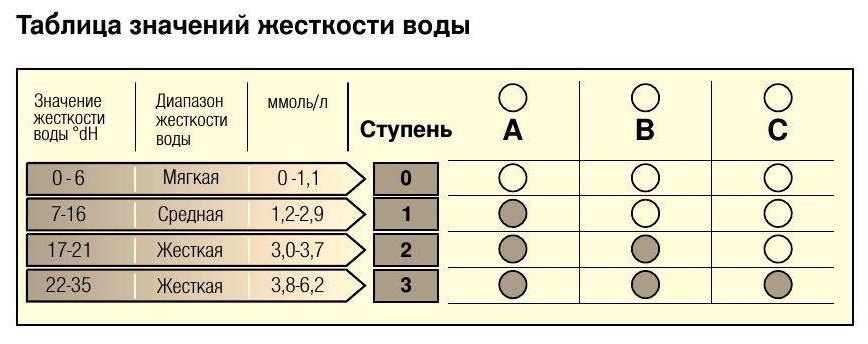
- 13-16 hardness can be eliminated by level "H:04" on a Bosch dishwasher.
- For hardness 17-21 you will need "H:05".
- For strong hardness from 22 to 30, set the level to “H:06”.
- Finally, for hardness above 31, select the maximum level "H:07".
If you have hard water at home, be sure to add special salt, for example, from Finish, to the bunker at the bottom of the washing chamber, which can reduce the negative impact of hard water on PMM.
Therefore, a high level of hardness in a Bosch dishwasher, together with special salt, can save your household appliances from breakdowns, as well as improve the quality of dishwashing. Don’t forget to fill the machine’s hopper with salt, which can be used up in about a month at the maximum hardness setting “H:07”.
Find out the hardness of the water in the tap
When you live in a large city, finding out the hardness level of tap water is not difficult, because you have official sources at your disposal where data can be updated monthly. The city water utility’s Internet pages can help with this. If you live in a small town or village, then you will have to check the water hardness with your own hands. There are many such methods, so we will list the most famous ones.
- Mass comparison. The idea is to compare the mass of liquid from multiple sources. To do this, you need to fill several identical containers with different water, and then weigh them. The larger the mass of water, the harder it is. This option will roughly help determine the hardness, but does not give the specific answer you need to use a Bosch dishwasher.
- Determination of soapiness. For this method you need ordinary laundry soap, which you need to moisten in water, and then wash your hands with it.Due to the high hardness, the soap will be difficult to foam when in soft water the foam will form quickly and rinse off slowly.
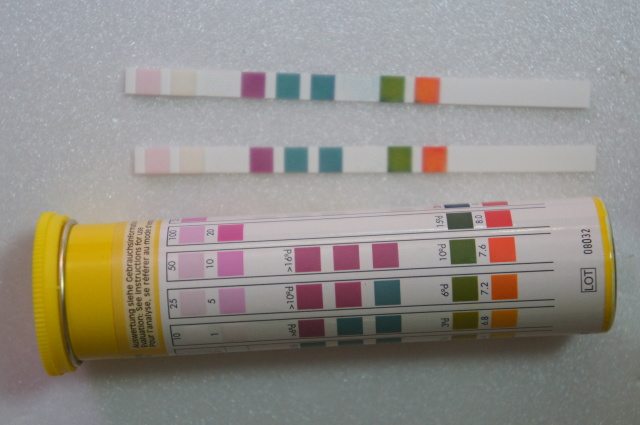
- Scale formation. By how quickly scale and sediment accumulate in the kettle, you can determine the hardness - if this happens often, then the water is not of the best quality, but if not very quickly, then the water in the tap water is soft.
- Turbidity. The last is a subjective method that allows you to determine the very fact of rigidity, but not the exact indicators. To do this, you need to take a full transparent bottle of water, put it in the dark for two days, and then check it. If a film and cloudiness appear on the walls of the bottle, then the hardness is exceeded.
- Test strips. These devices help to find out the exact stiffness indicators.
It is worth focusing on the strips separately, because they are an objective assessment method that is best used. In this case, test strips are also divided into several types. The most common are those impregnated with a special composition. Similar testers, often supplied with Bosch and Miele dishwashers, need to be dipped in liquid for just 1 second, and then compared with a table showing all the colors of the stripes and what they mean.
There are also strips from the Biosensor Aqua company, the operating principle of which is similar, but still slightly different. They need to be kept in water for several seconds, and then wait about a minute until the strip changes color. Only after this can the result be searched in the table with test results.
Finally, there are test strips that need to be used in conjunction with special reagents. To do this, first fill a container of water, lower the tester into it, and then slowly pour the reagent into the liquid.When the color appears, the hardness index is determined using the table.
If you don’t want to use disposable strips, you can purchase a TDS meter that accurately determines hardness indicators, but such a device costs much more than test strips.
When you need to quickly and inexpensively find out the hardness level of tap water, there is simply no better way than test strips. They cost much less than water testers, and their accuracy is much better than subjective assessment methods, which only confirm the hardness or softness of the water, but do not determine the numbers.
Interesting:
Reader comments
- Share your opinion - leave a comment

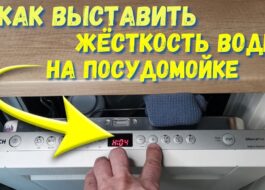
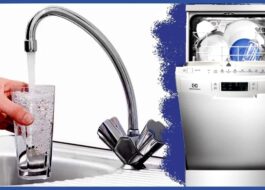
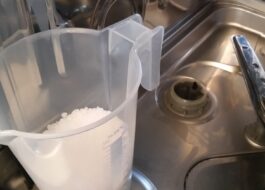
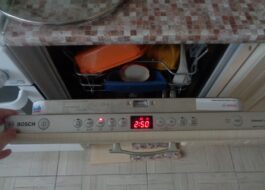

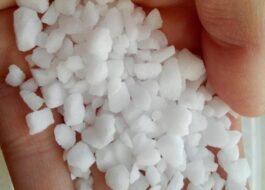














Add a comment